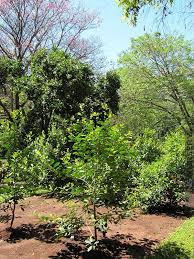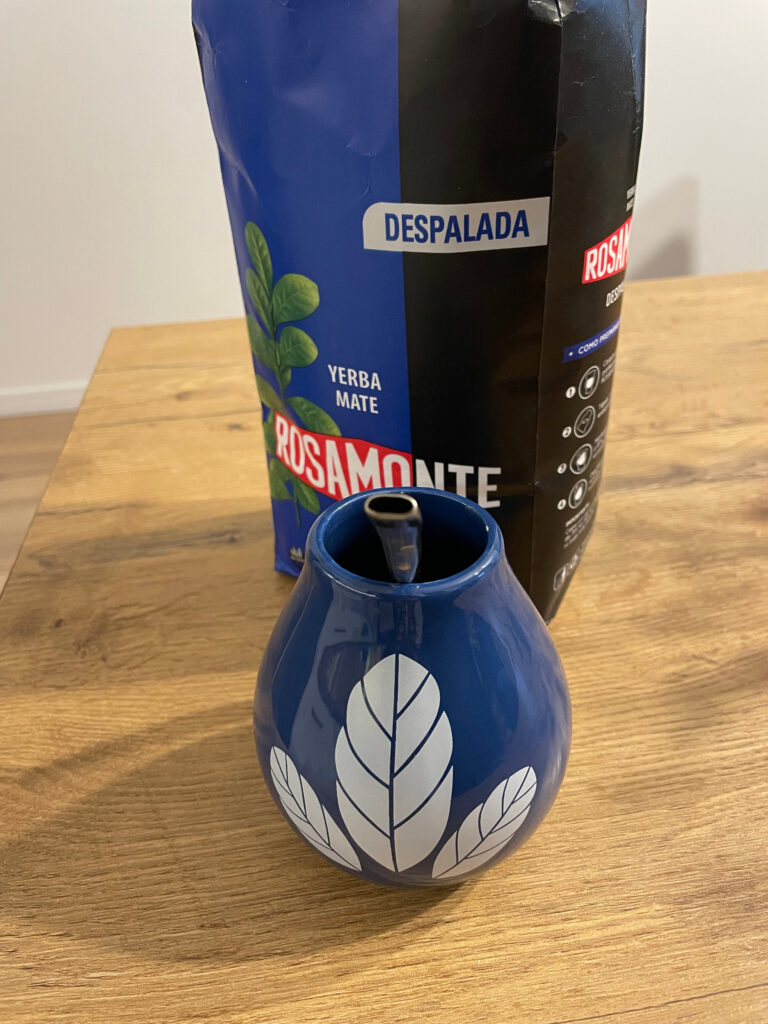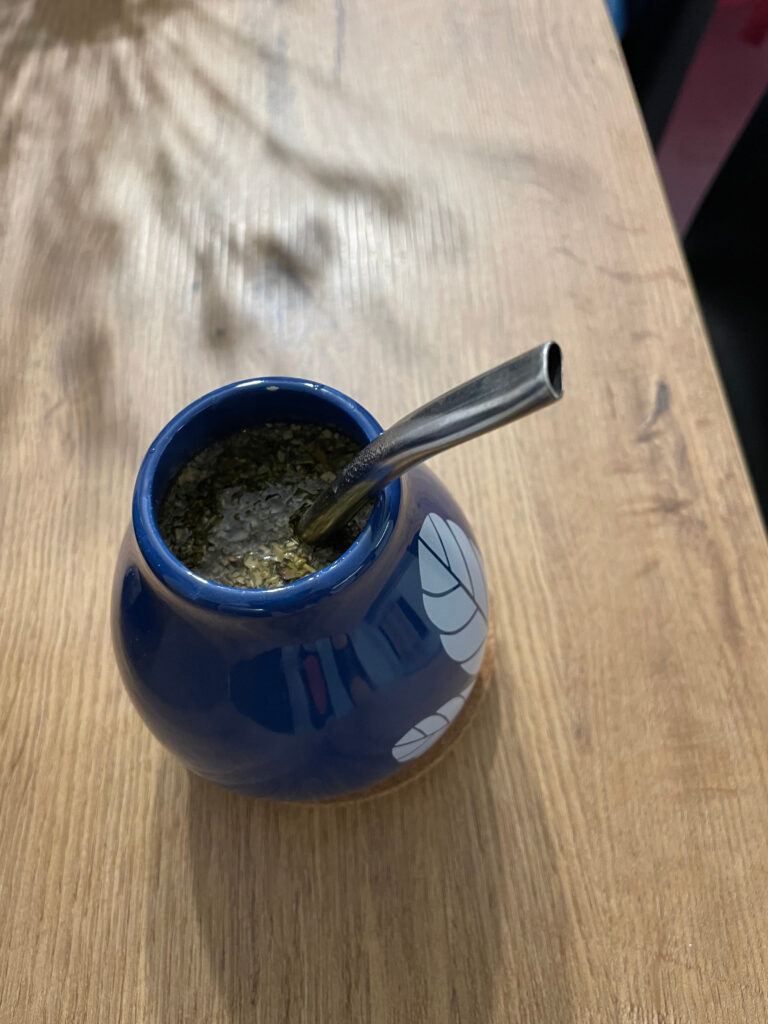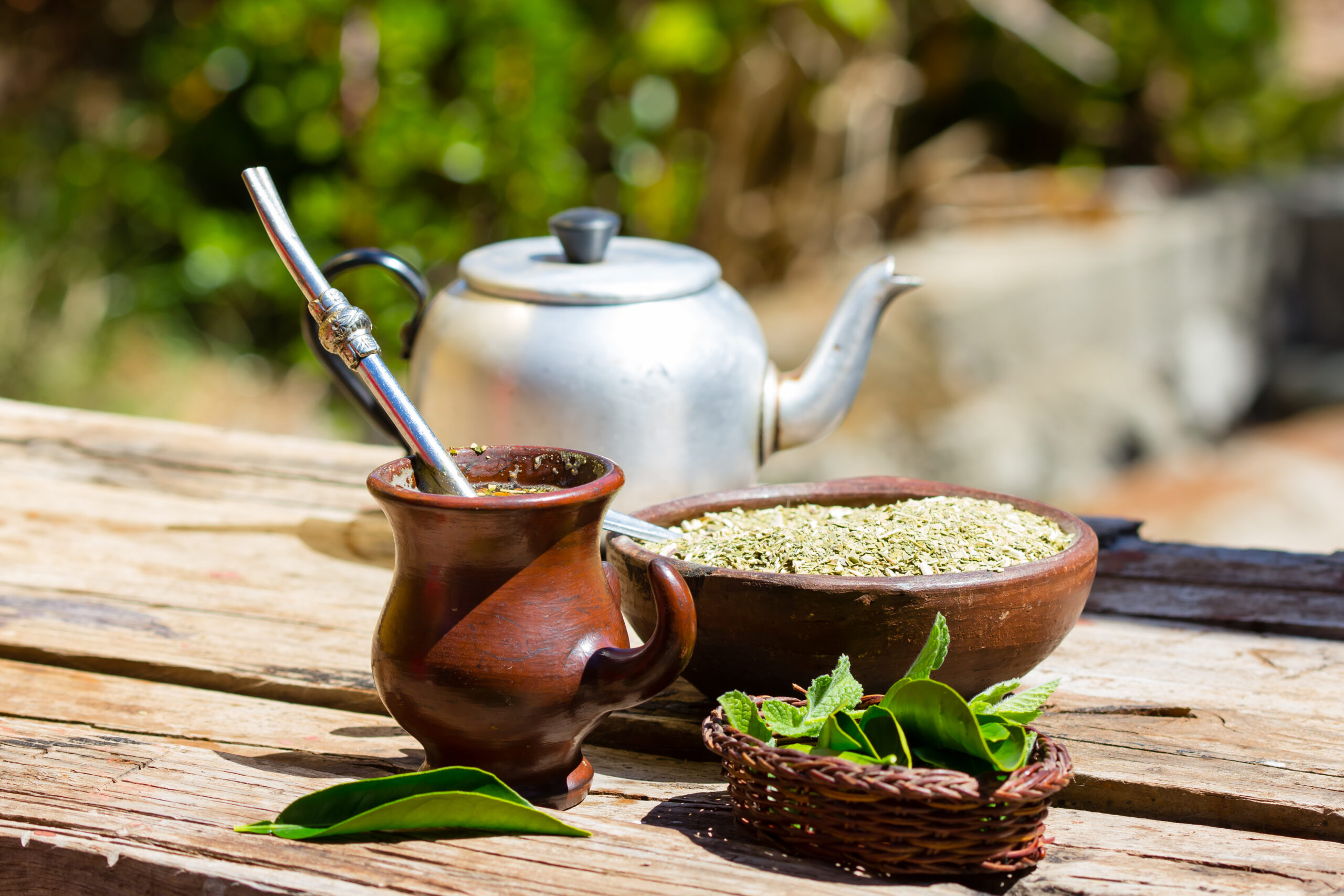Waking up in the morning without a whit of energy, feeling dizzy and forcing yourself to get out of bed, semi-consciously paving your way to the kitchen to prepare your first drink – does that sound familiar to you? It does to me, a person who suffers with iron deficiency. I am sure there are many methods to keep you wide awake from the early start of the day, but what works for me the best is a cup of fresh yerba mate (also called “mate”). Few sips and I start feeling the energy flowing through my body.
What is yerba mate?
If you haven’t heard of it before, let me briefly explain its origins. It is a type of herbal tea made from leaves and stems of the plant called “Ilex paraguariensis” (translated as Paraguayan holly) which are dried over a fire. It traditionally comes from Latin and South America, mainly Argentina, Paraguay, Uruguay and Brazil, and has been consumed by Indians for centuries. It has reached Europe thanks to Jesuit missionaries and since then gained growing popularity. Some say that sharing a yerba mate from the same gourd symbolises the long-standing friendship. Similar to green or black tea, it contains caffeine which keeps us focused. Some people say it stimulates them even better than coffee.

Types of yerba mate
The most common division between yerba types is “sin palo” and “con palo”. The latter one is encountered more often and contains small bits of the stem which make up about 35% of the tea composition but have less caffeine.
Sin palo means “without sticks” as they form only 10% part of the tea, the rest is just leaves which have a higher quantity of caffeine. It is the stronger type of yerba and hence it gives you a more impactful kick of energy.
The most famous brands are Rosamonte (my favourite), Taragui, Amanda, Cruz de Malta, La Merced, Parajito, Colon or La Rubia. Argentinian yerba mate usually tastes more balanced and delicate while Paraguayan has often a strong tobacco and smoky aroma and a bit of dust which determines its strength. It is rather not recommended for the beginner drinker as it may be too powerful.

Benefits of yerba mate
Is it healthy? Yes, quite so actually. Some recent studies reveal more and more favourable properties. In the 1960s scientists from the Pasteur Institute in Paris stated that it would be difficult to find another plant on the Earth that could compete with yerba mate in terms of its nutritional value. It contains practically all necessary vitamins and is rich in antioxidants as well as several micronutrients compounded in:
- Stimulants called xanthines
- Health boosting antioxidants – caffeoyl derivatives
- Anti-inflammatory and cholesterol-lowering saponins
- Polyphenols
- Vitamin C, B6, thiamine, riboflavin, potassium, calcium, magnesium, phosphorus, manganese and iron
As mentioned earlier, it helps with boosting energy levels, stimulating our nervous system, making us less tired and improving mental focus. I always drink it before I start getting involved in any sort of studying or demanding mental work and it always makes such a positive difference. It is said that one cup of yerba contains about 80 mg of caffeine per cup on average and assists with alertness, better attention and quicker reaction to external factors but without any jittery side effects.
It is not just about the cognitive function, mate can also improve the physical performance ie. alleviate muscle contractions or reduce fatigue. Interestingly, one study showed that 1g of yerba taken in a capsule before the exercise helped to burn 24% more fat. So it might help with weight management and losing unnecessary fat.
Another blessing of drinking yerba is the protection against infections. It can naturally support the immune system. There were some studies conducted which proved that the tea extract eliminated the bacteria E.coli (causing food poisoning symptoms). It is also assumed that it may stop the growth of fungus which is responsible for dandruff or skin rashes.
I would say one of the greatest benefits of this drink is lowering the blood sugar levels and risk of a heart disease. We all understand multiple complications related to diabetes and what yerba mate does is the improvement in insulin signalling and reduction in creating AGEs (advanced glycation end-products) which contribute to the development of that disease. Some elements of antioxidants ie. caffeoyl derivatives and polyphenols help with heart issue prevention.

Yerba mate preparation
Yerba mate is traditionally served in a container called a gourd, also known as a calabash, often with a shape of a pear. Don’t worry if you don’t have one, it can also be served in a normal mug or glass. We sip it through the stainless steel straw “bombilla” with the filter to strain out the leaves. First, fill the ¼ or ⅓ bottom of the gourd with leaves (or more if you prefer it stronger), then add hot water (ideally between 70-80°C) which can be refilled several times (5 to 8) to make a new batch. Thermos with hot water (or kettle maintaining its temperature) is always the best way to top up a fresh portion of drink.

Remember that yerba mate can also be served with cold water, for example in hot climates. It is called “terere” and served with ice cubes. Some people also add refreshing lemon or mint.
I hope I have encouraged you to try yerba mate. If you wish to share your experience or useful information please contact me.
Happy tea time!
